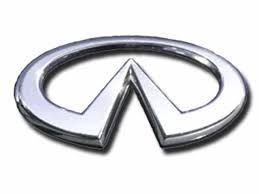J30 V6-2960cc 3.0L DOHC (VG30DE) (1995)
/Page-1676003.png)
3.
Perform the Preliminary Inspection outlined in this section of the bulletin.
4.
Follow the appropriate repair procedure outlined in this section of the bulletin.
Preliminary Steps
Always perform these preliminary steps before performing the other listed diagnosis and repair procedures.
1.
Check and adjust tire pressure. A pressure difference of 3 psi or more from one side of the car to the other can cause the vehicle to drift toward the
side with the lower pressure.
2.
Determine if the wheels and tires are the same as the wheels and tires that were originally supplied on the vehicle.
3.
Visually inspect the vehicle for unusual load conditions. Remove unusual loads before road testing.
4.
Visually inspect the tires for wear and condition. Replace tires that show damage or have excessive or uneven wear.
5.
If corrections are made to the tire pressure, vehicle load condition or tire condition, road test the vehicle again to determine if the incident
continues to occur. If so, refer to the appropriate diagnosis and repair information below.
Steering Pull Diagnosis And Repair
1.
Confirm the direction of pull with a road test.
2.
Remove the front wheels and exchange them left to right and right to left.
3.
Road test the vehicle again. If the vehicle continues to pull in the same direction or in the opposite direction continue with step 4.
4.
Check the vehicle's wheel alignment using accurate and properly calibrated alignment equipment. Record the caster, camber and toe-in
measurements and refer to the vehicle information below.
NOTE:
When performing a wheel alignment always use the steering wheel to change the position of the road wheels. Turning the steering from the road
wheel will affect the accuracy of the readings provided by the alignment equipment.
Passenger Cars and 1997 and later QX4s
^
If the front wheel alignment is within specification perform the Steering Rack Sliding Force Adjustment procedure as shown.
^
Caster and Camber are not adjustable on these models. In some cases the Caster and Camber can be changed slightly by loosening related
suspension component such as the upper strut mount and lower link pivot and shifting the strut and lower link in the direction needed to bring
it into alignment. If the front wheel alignment is still out of specification, it is likely a component is bent. Determine the cause and repair as
necessary.
^
Adjust the toe-in to specification.
Effects of caster setting on vehicle pull
^
If the left front caster setting is higher than the right front, the car will pull to the right.
^
If the right front caster setting is higher than the left front, the car will pull to the left.
Steering Wheel Off-Center Diagnosis And Repair
1.
Position the vehicle on an alignment rack.
2.
Set the road wheels in the straight ahead position.
3.
Loosen the tie-rod lock nuts and rotate the left and right tie-rods an equal amount in opposite directions. This will center the steering wheel. If the
steering wheel off-center increases, reverse the direction you are turning the tie rods.
4.
Use the alignment equipment to verify and adjust the toe-in.
5.
Verify the steering wheel is centered.
